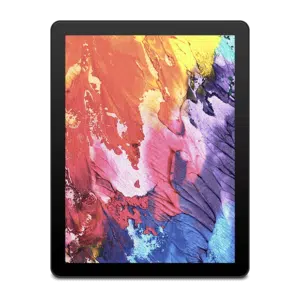E Ink Displays vs. Traditional LCD Screens
E Ink Displays vs. Traditional LCD Screens
Blog Article
How E Ink Displays Are Revolutionizing Modern Screens
E Ink engineering has silently changed how we consume and communicate with electronic content. From e-readers to Electronic ledge brands and electronic signage, that impressive display technology balances readability, energy performance, and versatility. But just what makes it work? Let's have a deeper consider the research E ink computer display and how it functions.
How E Ink Works
At its key, E Ink is a form of Electronic Paper that utilizes electrophoretic display technology. A coating of tiny supplements filled up with white and black particles are stopped in an obvious fluid, known as the ink. These contaminants are positively priced on one part and adversely priced on the other. When an electric field is placed on the capsule, the particles transfer towards either side, producing the top of the Ink to reflect gentle either as black or white.
This method mimics how conventional Ink appears in some recoverable format, offering E Ink their realistic appearance. The engineering can also be amazingly energy-efficient since it only wants power when adjusting what is displayed on screen.

How E Ink Operates
E Ink technology is founded on a notion called electrophoresis, which relates to the motion of priced contaminants halted in a fluid when a power area is applied. Each E Ink display comprises millions of small capsules filled up with obvious liquid, comprising dark and bright particles. These particles are oppositely priced; black kinds hold a poor charge, while bright kinds are positively charged.
When a power field is placed on these supplements, the charged contaminants are altered to produce the required picture or text. For example:
In case a good electric subject is used, the adversely priced black particles proceed to the the top of pill, making the region appear black.
Alternatively, if a negative electric subject is applied, the definitely priced white contaminants rise to the outer lining, making the area look white.
The outcome is a sharp, high-contrast display that mimics the appearance of produced Ink on paper.
Crucial Top features of E Ink Technology
E Ink technology offers many distinctive advantages that subscribe to their rapid adoption across various industries:
Low Energy Consumption
E Ink displays eat up power only once the information is updated. Unlike traditional LED or LCD screens, they cannot involve backlighting or regular energy to keep up an image. That makes them acutely energy-efficient and well suited for battery-powered units like e-readers.
Understandable in Brilliant Mild
Unlike many screens that have problems with glare under direct sunlight, E Ink displays succeed in normal gentle conditions. Their paper-like look ensures minimal eye stress, despite prolonged use.
Wide Viewing Aspects
E Ink displays offer regular visibility from just about any position, creating them well-suited for programs such as for instance electronic signage or community displays.

Applications of E Ink Engineering
While e-readers are perhaps the many recognized usage of E Ink, the engineering is obtaining its way in to other applications such as smart notebooks, Electronic rack labels used in retail settings, and even wearables. Its flexibility and performance allow it to cater to a growing number of use cases.
color E ink display technology embodies an ideal mixture of technology, executive, and practical usability. By understanding the artwork of electrophoresis, that cutting-edge invention is changing exactly how we interact with digital displays, offering sustainable and adaptable answers for an increasingly electronic age. Report this page